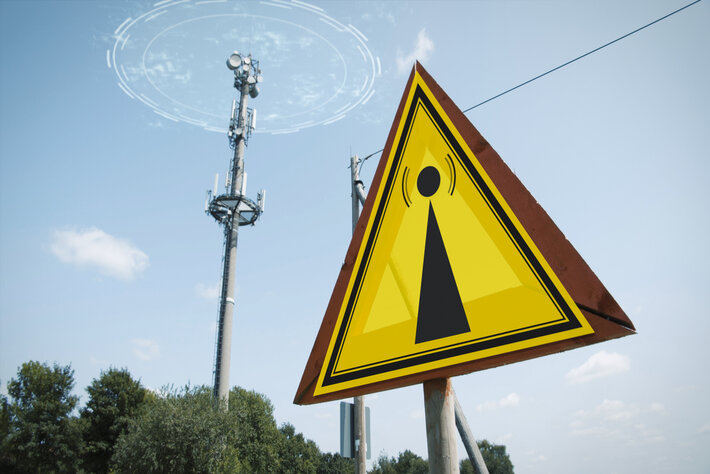In many ways, Internet connectivity has become the lifeblood of today’s modern business, powering digital operations, products, and experiences for end users, writes Mike Hicks, a principal solutions analyst at Cisco ThousandEyes. The Internet has revolutionised many different industries, and over the last twenty years, IoT technologies have broken new ground with innovations that help organisations operate remotely and manage devices and functionality for optimised performance, be it wearable or entire systems of sensors and more.
While Internet of Things (IoT) has reshaped industries, the Internet that powers it is a best-effort network, void of a Service Level Agreement (SLA), and famously unpredictable which means the threat of an outage or disruption to core services is ever present. In use cases where safety and mission-critical performance are non-negotiable, such as transport or healthcare, these outages and other disruptions can have serious consequences.
To reduce downtime and performance issues, a first step is to consider expanding network visibility both inside and outside the perimeter. By being able to see end-to-end, across cloud and Internet networks, teams can identify issues faster, no matter where they’re occurring. New software technologies can bridge the gap between owned and non-owned networks, enhancing the reliability of mission-critical IoT technologies.
IoT-connected insight
The potential uses of IoT in organisations are vast, with leaders across industries finding new ways every day to make their products better and organisations smarter by harnessing IoT connectivity and gaining new levels of insight.
Using IoT for more insights-driven decision making is especially valuable in industries where time is of the essence. In the healthcare industry, for example, sensors in vaccine fridges, doctor-to-doctor communications, and access to remote lab and diagnostics are just a few of the ways Internet-connected software plays a critical role in high-stakes environments where disruptions and lags can have a profound impact on operations.
In industries like transportation, IoT plays an increasingly important role when it comes to monitoring the performance of Internet-connected functionality in connected cars, capturing telematic data from railroads, or real-time fleet tracking and performance.
Continuous measurement for continuous performance
At its core, every Internet-connected device or capability is an endpoint. Monitoring and optimising performance, therefore, is a matter of overseeing an intricate network of endpoints that becomes ever more complex the more extensive the geographical distribution. As organisations leverage more providers, they introduce more dependencies in the digital supply chain. Every hop in this chain plays a critical role in delivering the desired performance and functionality to the endpoint.
As these systems become more complex, the need for better visibility into end-to-end connectivity and productivity increases with the addition of each new device or endpoint. In the case of transportation, the performance of endpoints (i.e., trains, and automobiles) is difficult to monitor because they are moving assets. The intermittent lack of connectivity that can occur as these endpoints move makes it difficult to track assets and determine if there is an issue with one or more vehicles or endpoints to take preventative action. Latency and performance degradation can also be pivotal when it comes to moving targets.
When trains are moving at high speed, it is crucial that they have fast, reliable connectivity. In such situations, any delay in communication may affect passenger safety. To ensure the performance of the sensors deployed throughout the railway, organisations need to establish a seamless workflow from the endpoint to the cloud that powers it. This is necessary to assure the safety of passengers and maintain the smooth functioning of the railway.
The need for end-to-end visibility
Without the right technologies in place, IoT connectivity is left vulnerable to outages and downtime whenever Internet or cloud disruptions occur. In this new ‘borderless environment,’ avoiding and mitigating impact starts with understanding the holistic environment IoT functionality relies on, which involves end-to-end visibility across all domains, including the Internet.
End-to-end visibility provides knowledge where previously, there were just unknowns. This level of visibility is provided by solutions that leverage telemetry and software agents to monitor the cloud and Internet environments that have become part of the extended technology stack. With this performance data, organisations can make better decisions about where they need to invest in updates like readers, sensors and software, to improve overall reliability, performance and safety.
Organisations deploying IoT need end-to-end visibility for optimal performance, but even before IoT technology is implemented, baseline network performance tests should be completed in order to map out the network hop-by-hop and distinguish infrastructure capabilities and characteristics.
Internet-connected everything
In today’s digital economy, no matter the industry, the ability to deliver stellar digital experiences across domain boundaries and complex service paths—regardless of underlying infrastructure—is the differentiator. Look under the hood of any digital experience and you’ll find a digital supply chain powered by network connectivity. To deliver optimised digital experiences in this new environment visibility needs to be a seamless part of the workflow to truly see and understand what’s impacting performance and the ultimate delivery of the digital experience.
In IoT use cases, especially in high-stakes environments like healthcare and transportation, assuring connectivity and performance is of paramount importance. With the vast amount of intelligence available to harness across internal as well as external networks, this new level of continuous insight plays a critical role in helping these industries pursue and achieve better performance, logistics, planning and proactive issue solving with support from alerts and fault codes.
As innovation and IoT deployment continues to develop and grow, so too are the software technologies that support these digital experiences. End-to-end visibility is essential to ensure IoT connectivity will perform at capacity and can be a reliable method for improving services for many different industries, now and in the future.
Comment on this article below or via X: @IoTNow_










